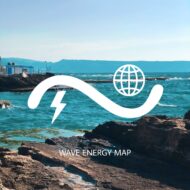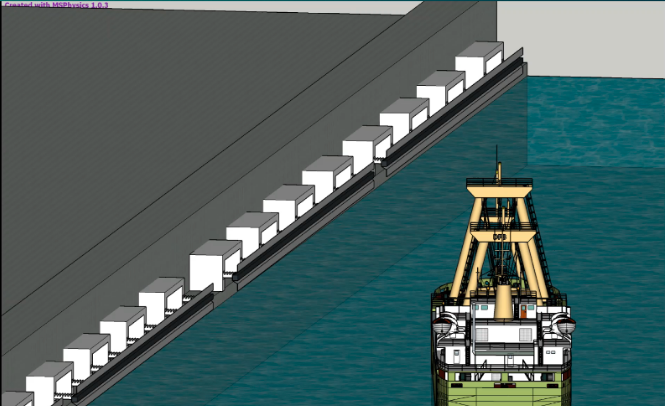–
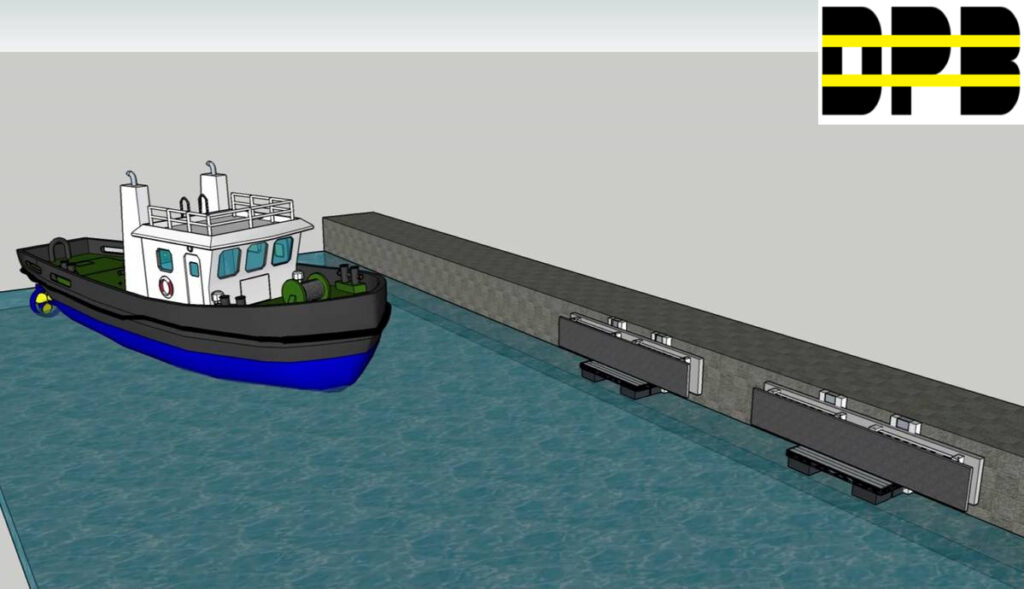
–
–
Multi Modular Safety Device to service the Port Industry
Dynamic Protective Barrier (DPB) is an innovative safety device with a novel mechanism proposed to dissipate energy for short duration impact caused by the docking ship and/or vessels.
The main job of the device is to dampen and contain the vessel movements, thus eliminating the effect that passing ships, tides, wind and long-period waves have on moored vessels and the constant low velocity impact that occurs with the port infrastructure. This means using Dynamic Protective Barrier can eliminate the structural damage that occurs and can assist in improving safety and reducing operational costs of ports and marinas.
Additionally, the developer of Dynamic Protective Barrier claims the technology has advantages over conventional bollards such as reduced time for securing vessels and associated reduction in labor costs. This further increases the range of environmental conditions in which cargo can be transferred. It further enhances safety by keeping the vessels stagnant thus, simplifying day-to-day operations. The system speeds up the berthing process and minimizes workload and manual line handling thus improving overall efficiency.
Present methods on the market such as rubber fenders are limited solutions that accumulate the kinetic energy resulting from the low impact of the mooring/docking vessels hence causing cracks in the quay walls, sometimes even damaging the vessels which have an economic impact. DPB aims to eradicate the constant repair of quay walls and vessels. It also aims to reduce time for securing vessels alongside and associated reduction in labor costs which is usually spent in the regular replacement of the fenders by effectively dampening the impact and thus dispersing the load using this innovative technology.
source : https://www.marinelink.com/news/tech-file-dynamic-protective-barrier-488967
–
–
DPB – The Innovation
–
Dynamic Protective Barrier is a device that actively disperses the energy gained from the action of one object coming forcibly into contact with another, thereby converting the translational kinetic energy to rotational kinetic energy.
DPB’s self- return system (SRS) works constantly in conjunction with the vessel which can also be used as a kinetic energy recovery system to power electricity through a DC generator. In addition, DPB can be utilized and function as a constant tidal/wave renewable source of energy and be self-sustainable. As the Ports & Marina industry shifts to zero emissions carbon neutral and electrifying their fleet, DPB and its technology is well positioned to support this movement.
–
–
Physics & Working
- Converts input translational Kinetic Energy to Rotational Kinetic Energy
- Dissipates energy for a short duration load
- The incident translational energy instead of getting absorbed as plastic strain energy is converted to rotational kinetic energy
- Disbursement process occurs through the interchangeable rotational masses which can cater to vessels of different size & load
- DPB is designed to engage and retract (self return system).
–
–
Why DPB is the solution?
| CURRENT STATE | FUTURE STATE |
| Fenders just partly absorb the impact of vessels while docking | DPB disperses the impact load effectively |
| Leads to walls getting damaged hence increasing the cost of repairing the infrastructure | The quay walls remain protected as the impact is safely contained and disbursed |
| Increases the lead time as business is lost due to constant repairing of the quay walls | No repairing required hence business continues to thrive |
| Loading and unloading of cargo takes time because fenders push back some of the impact caused by the vessels (Newton’s Third Law) | Loading and unloading of cargo is much safer and easier as the device dissipates the energy without any opposing force |
–
–
DPB and its innovative technology offer the following benefits;
- Reduces the overload/forces at the time of impact
- Protects the infrastructure from micro and macro damages
- Minimizes the structural damages to the vessel while docking
- Improves safety by containment of the vessel
- Cost effectiveness due to its innovative design
- Low maintenance and self-sustainable
- Adaptability and versatility to different infrastructures
–
Maintenance, Service and Installation
- Environmental materials are considered in the production state of DPB such as composite materials therefore low maintenance required.
- Installation is based on anchoring and securing DPB onto the existing port/marine infrastructure such as docks and quay walls.
- Lubrication and inspection of components required annually or as needed
–
Summary
- There are limitations to the current ports industries docking infrastructure system
- DPB is an innovative safety device that dissipates energy for short duration shock load
- Converts input translational Kinetic energy to Rotational Kinetic energy
- Protects the wharf structure and quay walls
- Provides a wide spectrum of applications once implemented such as ease of cargo transfer and berthing process
- DPB is geared towards infrastructures such as marinas, harbours, ports, and/ or vulnerable structures ie: offshore energy platforms.
- DPB can cater to vessels of different sizes & weight
- Future scope – self-sustainable renewable source of energy
–
–
–
–
Mauritania ports
Mauritania is located at strategic crossroads in the north Africans, and at the heart of many Atlantic shipping lanes . the country its distinguished position with its Atlantic coast, which includes more than 750 km . In addition to its proximity to Europe. As well as the direct access to important reginal markets, such as Algeria, Mali, Morocco and Senegal.
This is what prompted the Mauritanian government to benefit from this geographical location and to develop the port sector.
Work has been done to expand the most important port in the country, which is the port of friendship, also known as the Autonomous port of Nouakchott, and port of Nouadhibou, which is considered an economic lever, is Mauritania’s gateway to export, especially iron ore, in addition to the construction of two new ports in the past five years, which are “Tanit Port” and “Ndiago Port“.
–
International Shipping Map

–
–
–
–
Offshore Gas projects
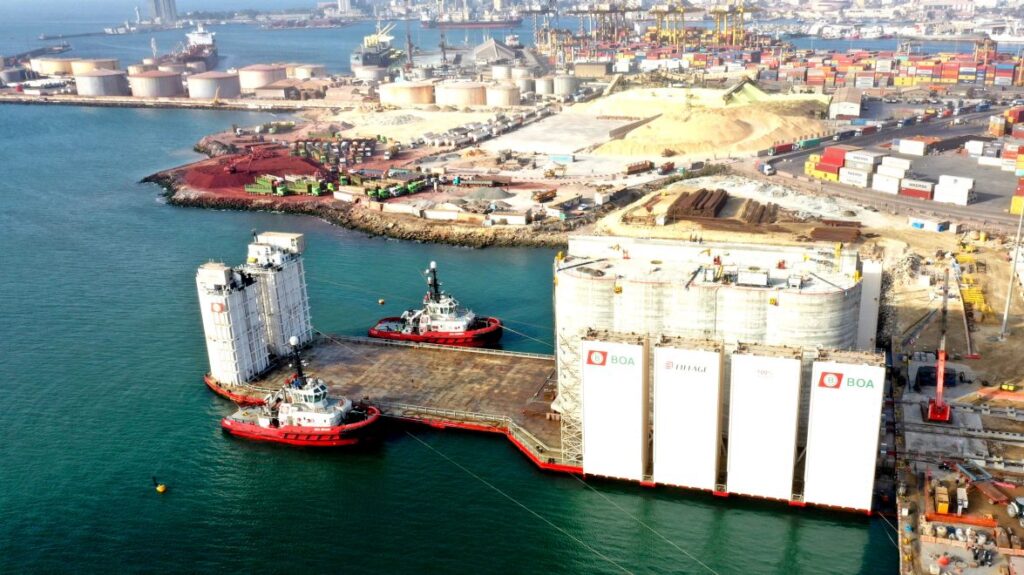
–
In July 2021, the GTA project is granted Status of National Project of Strategic Importance by the Presidents of Mauritania and Senegal. The agreement was made with two companies, British Petroleum (OPERATOR), and KOSMOS ENERGY
This important recognition shows the commitment of the host governments and the importance of the project to both countries.
–
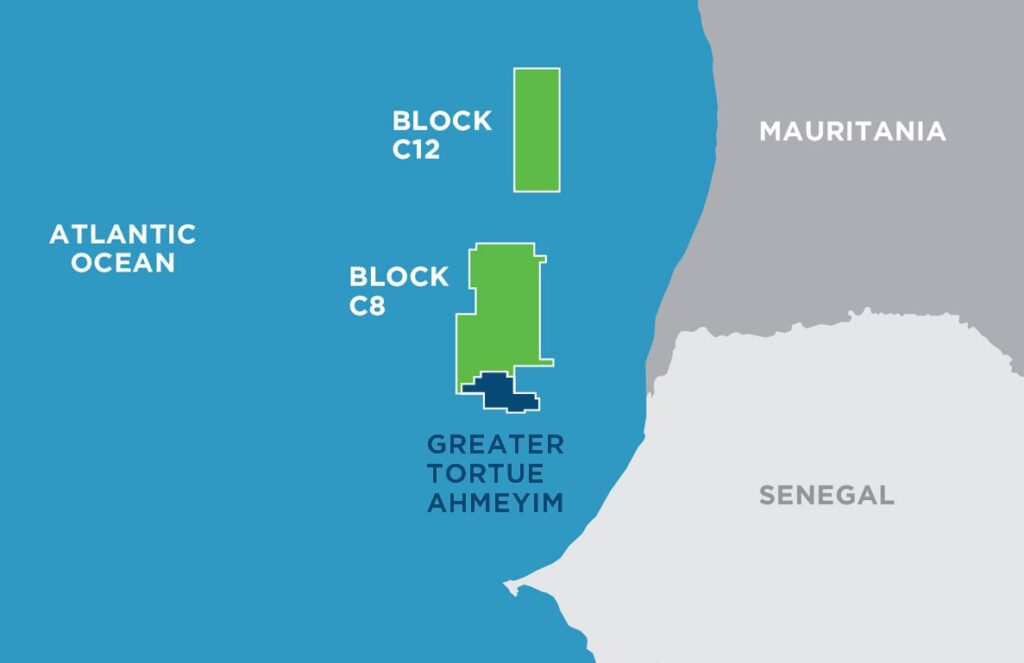
–
2023 year waiting for Mauritania to enter the club of liquefied gas producing countries, after the promising discoveries, which brought giants of oil and gas production, as the country will witness the export of the first shipment of extracted gas, from fields located in The Mauritanian-Senegalese territorial waters, with the start of production from the “Tortue-Ahmeyim” field, which was scheduled to start production in 2022, but it was not spared from the repercussions of the Covid-19 pandemic, which delayed the process of starting production in the field.
And estimates indicate that the reserves of this field it reaches more than 450 billion cubic meters.
The large natural gas reserves that were discovered off the coasts of Mauritania, increased the activity of Mauritania’s ports (the port of Nouakchott, the port of Nouadhibou, the port of Ndiago).
- Logistical support, and supply chains in the process of building an offshore gas extraction plant
- Preparing the infrastructure to receive the extracted gas
–
With the expected increase of activities in the ports of Mauritania, the DPB will have an important role in protecting the infrastructure of ports and ships, as well as increasing the efficiency of loading and unloading operations.
–
–
–
–
–
1- Autonomous Port of Nouakchott Port of Friendship
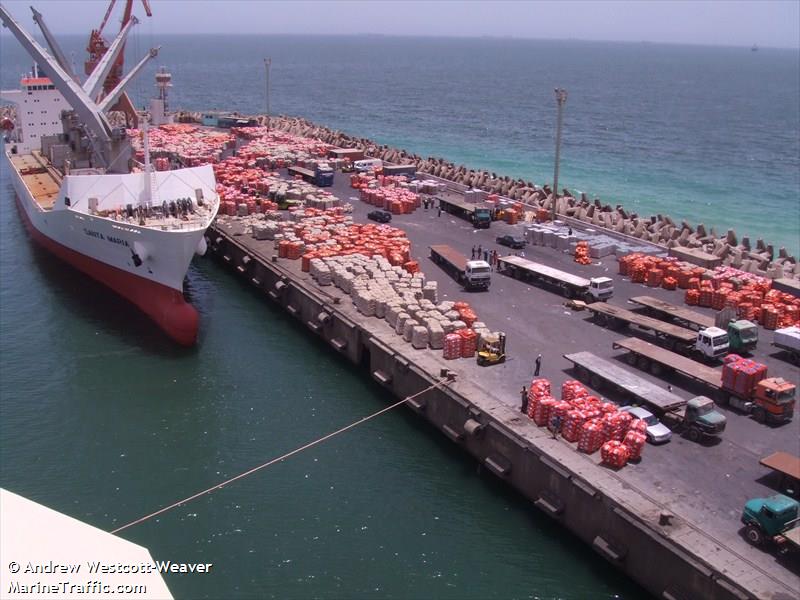
–
The port of friendship in Nouakchott, known as PANPA, has a privileged geographical position. At the crossroads of Africa, Europe and America, this is one of the first public commercial ports in sub-Saharan Africa for ships departing from Europe.
The performance of the port of Nouakchott in terms of handling rates generally ranges from 1200 tons to 2500 tons per day for the packing plant, 3 containers per hour. 95% of the traffic in the port of friendship is imports products. The total potential movement capacity is one million tons
Since it represents one of the pillars of the national economy, its traffic has grown exponentially since its commissioning in 1986, rising from less than 400,000 tonnes in 1987 to 3,675,814 in 2016, at an average rate of + 9.52% per year.
Containerized traffic has increased from 56,448 TEUs (twenty-foot equivalent containers) in 1988 to ~134,413 TEUs in 2016, an average increase of +12.5% per year.
Mauritanian President Mohamed Ould Cheikh El Ghazouani inaugurated, on 14.12.2021, a new expansion of the port of Nouakchott, which was completed at a cost of 320 million dollars.
According to the Mauritanian News Agency, this expansion consisted of building a container berth with a length of 570 meters and a depth of 15 meters.
The agency indicated that this expansion provided the port with an additional capacity of 600,000 containers annually, in addition to the port’s previous capacity of 350,000 containers.
According to the same source, this expansion also enables the port of Nouakchott to receive ships of large size, and to triple its unloading capacity.
Transport Minister Mohamedou Ould Ahmedou Ould Mhaimid said that this expansion includes two berth bridges and modern handling equipment that will improve the pace of handling in the port and provide 500 direct job opportunities.
In a speech during the inauguration ceremony, the minister indicated that a significant increase in fees had been made that would enable the state’s public treasury to increase its revenues from the utilization of the berth, by nearly $157 million.
–
–
–
Summary
is a Medium-sized Port. The types of vessels regularly calling at NOUAKCHOTT are Bulk Carrier (25%), Container Ship (22%), General Cargo (19%), Offshore Supply Ship (6%), LPG Tanker (4%).
The maximum length of the vessels recorded to having entered this port is 265 meters. The maximum draught is 11.2 meters. The maximum Deadweight is 63800t.
Is located at West Africa, West Africa in Mauritania at coordinates N 17° 59′ 20.40″ – W 016° 01′ 49.79″. The official UN/Locode of this port is MRNKC.
source : https://www.marinetraffic.com/en/ais/details/ports/1120?name=NOUAKCHOTT&country=Mauritania
–
–
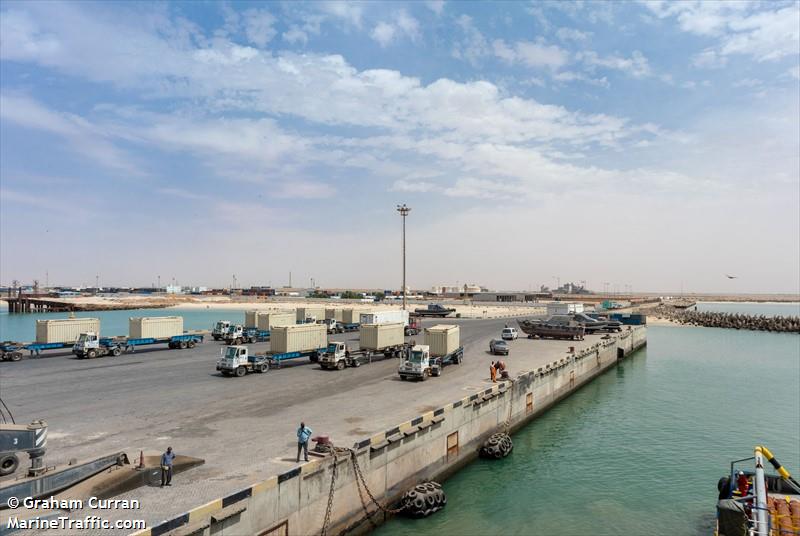
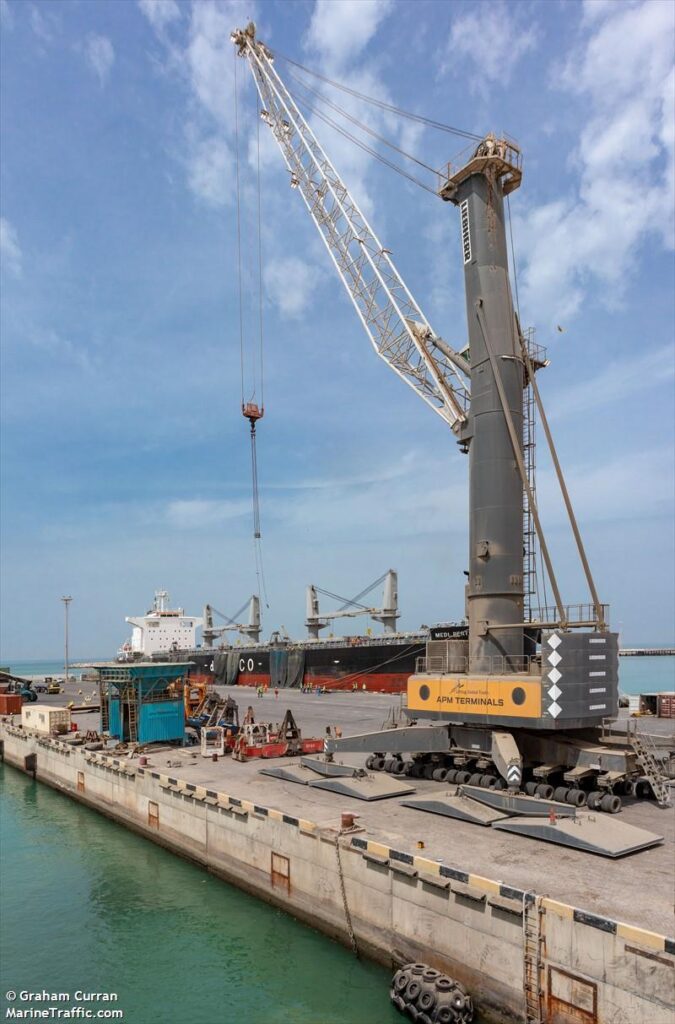
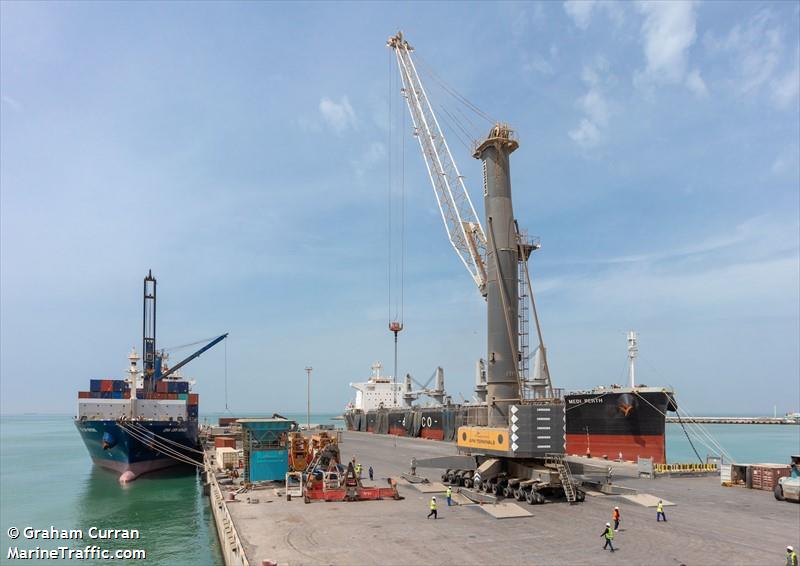
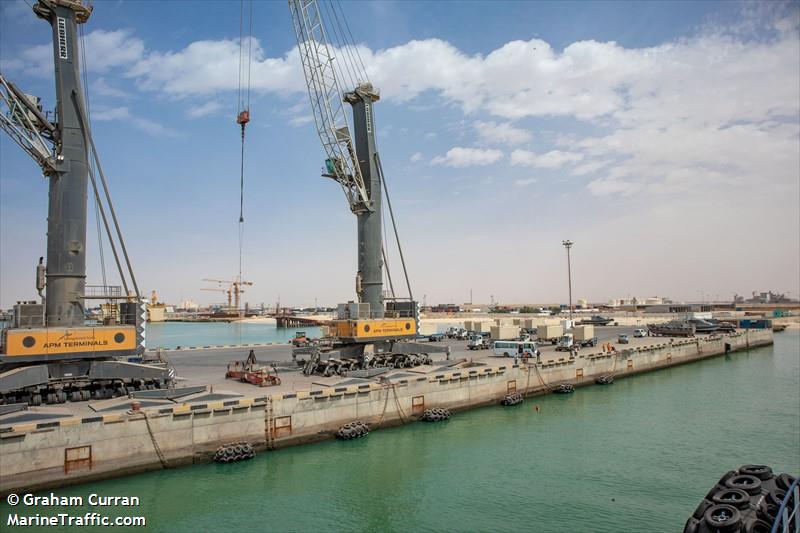
source : https://www.marinetraffic.com/en/photos/of/ports/port:1120/port_name:NOUAKCHOTT
–
–
–
This expansion of the port enables it to accommodate giant ships, and thus makes the port of Nouakchott the most important destination for shipping in West Africa.
–
–
The DPB device will enable to raise the efficiency of the port as it reduces the time taken for ships to dock, and will also reduce the cost of maintaining port facilities, in addition to securing ships and cargo, as it will reduce the effects of waves resulting from the movement of ships and will reduce the excitation of winds and long-range waves
Which will increase safety levels and increase the smooth running of the port’s work
–
–
–
–
2-Autonomous Port of Nouadhibou
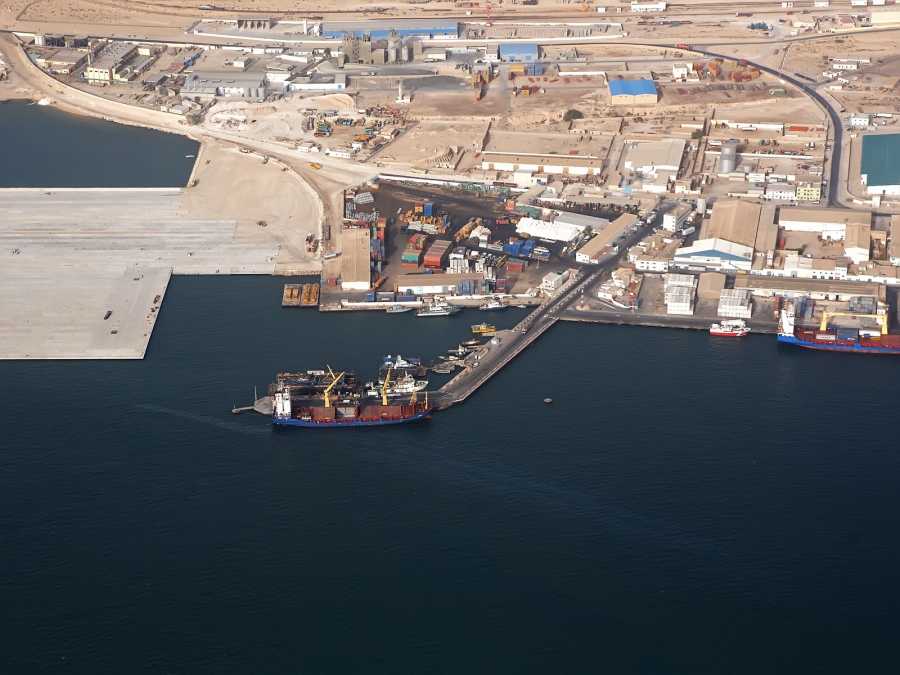
–
–
The Autonomous Port of Nouadhibou has just completed major projects which have made it possible to increase its reception capacity (new 660m quays) and to reduce the risks associated with navigation in the harbor and the access channel to the port ( wreck removal project). Certified ISO 9001 version 2008 and ISPS, the PAN (Port Autonome de Nouadhibou) has set up a management manual which covers all aspects of the operation of the establishment and an information system.
A one-stop shop has been created to simplify the application of procedures in this area
It has also installed a remote surveillance and security system and carried out a capacity building program for its human resources, in addition to renewing its computer and office equipment.
In accordance with the spirit of its quality system (ISO certified), the PAN is making more and more efforts to continuously improve the quality of services to customers and particularly to the handling of customer complaints.
In this context, the technical teams of the PAN are working on the creation through the website of a space for exchanges with users called Ecoute-Clients. Which exchange space will allow the transmission of complaints/suggestions, and consequently will give the customer the possibility of connecting to his personal account to consult his file situation.
A dynamic economic entity, the Autonomous Port of Nouadhibou, in addition to having a large land reserve with enormous development potential, occupies a privileged geographical position and as such enjoys exceptional natural conditions which keep it all year round. shelter from the swells.
The strategic position and the exceptional natural conditions led the Mauritanian State to the creation of the Nouadhibou Free Zone, of which the Autonomous Port of Nouadhibou constitutes the cornerstone for its development.
source : http://www.pan.mr/
–
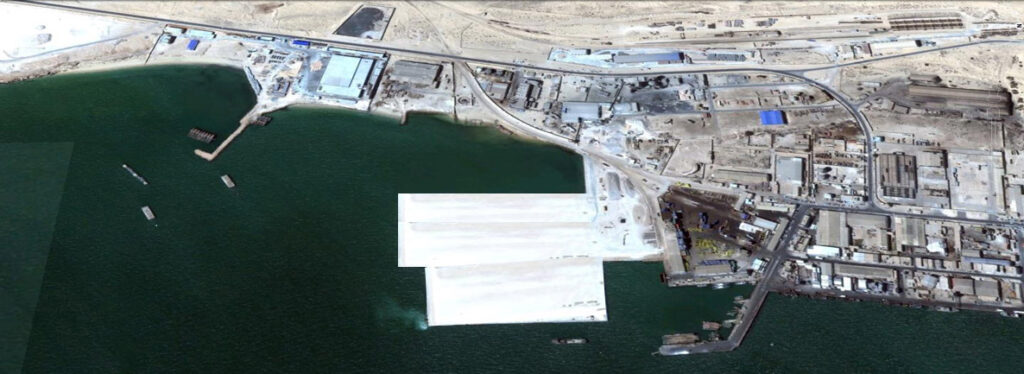
–
Infrastructure:
To fulfill the missions entrusted to it, the Autonomous Port of Nouadhibou has important infrastructures resulting in the equipment that we list below:
• a length of approximately 1000 ml including:
- a commercial wharf
- a fishing pier
- a barge wharf
- a quay for the navy
- and three fishing holds
On the fishing quays, two posts, including one for ro-ro ships, can receive commercial lines. All the quays, whose depths at the feet vary from 5 to 8m, are equipped with means of supplying water (9 outlets) and diesel (5 outlets).
• a safety and navigation aid system consisting of:
- on land: 1 lighthouse and 2 lights (cap blanc, Cansado and Chacal)
- at sea: floating mud marking the channel from the landing mud to the Port entrance.
• a wastewater treatment plant to collect wastewater from the various fishery product processing units.
• firefighting means (trucks, motor pump, guns, etc.)
• A 9 km pipeline linking the refinery facilities to the MEPP depot located at PAN
• a land area housing landfills, warehouses, processing plants, ice factories, ship chandlers, repair workshops, administrative offices etc…..
• radio communication facilities and equipment providing 24-hour watch.
• An AIS system for monitoring and controlling maritime traffic
• A video surveillance control system for access and the port enclosure
• A one-stop shop bringing together the services of the commercial and operational departments to simplify formalities for users
• A weighbridge, for weighing the import and export of goods
• A lighting system allowing work to continue at night
• Emergency generators to ensure continuity of electricity supplysource : http://www.pan.mr/
–
–
Summary
What kind of Port is this?
NOUADHIBOU is a Medium-sized Port. The types of vessels regularly calling at NOUADHIBOU are Fishing (51%), Fishing Vessel (24%), Trawler (7%), Container Ship (6%), General Cargo (3%).
The maximum length of the vessels recorded to having entered this port is 189 meters. The maximum draught is 7.2 meters. The maximum Deadweight is 25414t.
Where is the Port?
NOUADHIBOU is located at West Africa, West Africa in Mauritania at coordinates N 20° 54′ 32.40″ – W 017° 02′ 29.40″. The official UN/Locode of this port is MRNDB.
–
–
–
3-Tanit port
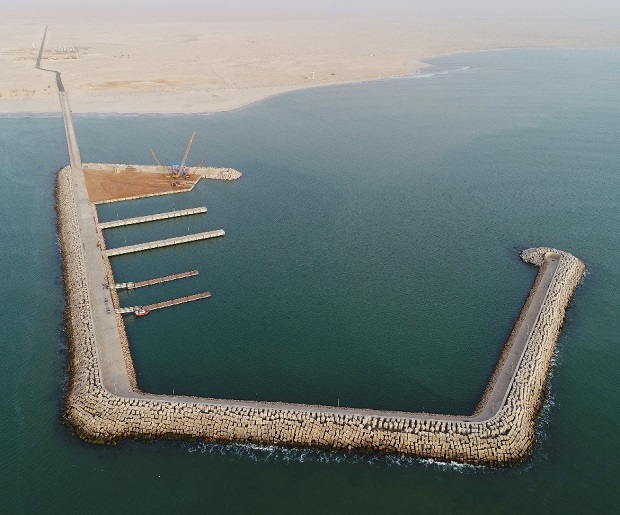
–
This major port complex, located 60 km north of Nouakchott, includes an island port capable of receiving 400 fishing units, a 550 m long access wharf, various operating and catch processing buildings, a energy production and a seawater desalination plant with a capacity of 1,000 m3/d.
The main objective of this program is to support the construction of Fishing Port in Tanit, Mauritania. Component
1: Construction of Port and Inland Infrastructure Component
2: Construction of Production Equipment. The African Development Bank (AfDB) plans to contribute an amount of UAC 23.3 million / USD 34.95 million. The Ministry of Economy and Finance in Nouakchott is set to implement the project. The board presentation is scheduled for 2011.
–
Summary
Tanit Port is a Medium-sized Marina/Local Harbour. The types of vessels regularly calling at Tanit Port are Fishing (75%), Trawler (16%).
The maximum length of the vessels recorded to having entered this port is 58 meters. The maximum draught is 2.6 meters .
Tanit Port is located at West Africa, West Africa in Mauritania at coordinates N 18° 35′ 16.46″ – W 016° 06′ 35.68″.
–
–
–
3- Port of N’Diago
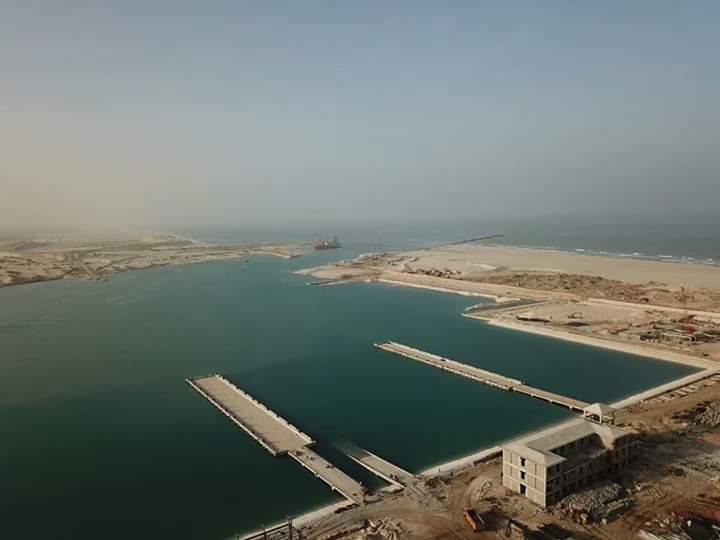
–
–
Port of N’Diago a multi functional port located 250 kilometres south of Nouakchott, the capital of Mauritania and 40 km from Keur Macène, a town and urban commune near Senegal’s border is edging closer to completion.
Launched in 2016, the eventual US$352M construction of the port of N’Diago will include a military port with a dock able quay on both sides, a naval base, a fishing port with a capacity of seven landing docks, a shipyard with a capacity of 70 ships per year, a commercial quay that can accommodate several 180 meter long boats and a landing bridge for artisan fishing.
Expectations for the N’Diago port
When it opens, this new multi functional port implemented by Poly Technologies Inc. a subsidiary of China Poly Group Corporation Ltd at the mouth of the Senegal River should increase the country’s logistical support and maritime transport capacities, strengthen the operational capacities of the armed forces in the face of security challenges and strengthen the sovereignty of the State in the exclusive economic zone (EEZ)
–
–
–
Conclusion
Dynamic Protective Barrier (DPB) enables the ports of Mauritania to increase efficiency and profitability, increase safety and protect port infrastructures, and reduce maintenance costs
–
–
